Photo: Silver Screen Collection/Getty Images
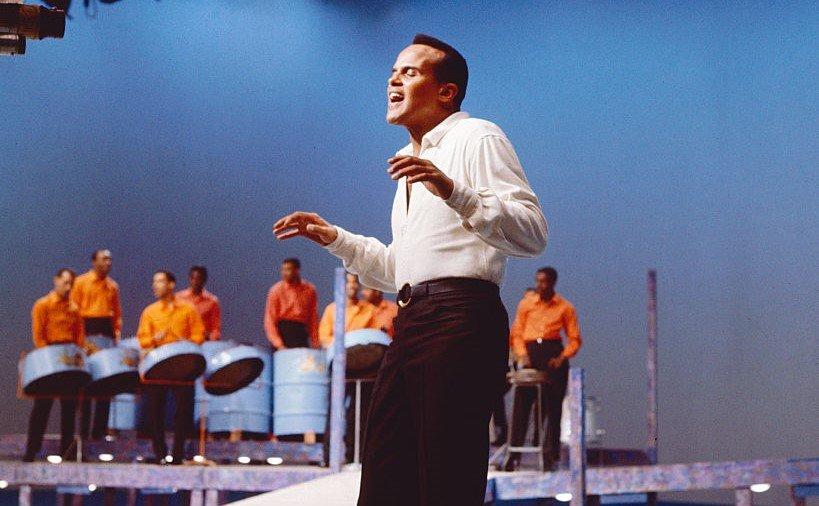
feature
Remembering Harry Belafonte’s Monumental Legacy: A Life In Music, A Passion For Activism
American icon Harry Belafonte passed away on April 25 at age 96. Throughout his legendary musical and acting career, Belafonte broke barriers and demonstrated a commendable commitment to equality.
An American icon whose outsize influence spanned generations and blazed trails, Harry Belafonte’s death at the age of 96 marks the end of a legendary life and career that shone in not only music, but social issues and the culture at large.
A two-time GRAMMY winner and 11-time career nominee, Belafonte's impact on the Recording Academy has lasted as long as the organization itself. The artist earned a nomination at the first-ever GRAMMY Awards in 1959 for Best Rhythm & Blues Performance (for his album Belafonte Sings the Blues). He’d win three years later for Best Performance- Folk for "Swing Dat Hammer." His other win came in the form of a GRAMMY for Best Folk Recording for An Evening With Belafonte/Makeba. He received a Lifetime Achievement Award in 2000, and three of his recordings are in the GRAMMY Hall of Fame.
"Harry Belafonte has made an immeasurable impact on the music community, our country and our world,” says Harvey Mason jr., CEO of the Recording Academy. "Through his music and his activism in the civil rights movement, Belafonte has used his voice to break racial barriers in America since the ‘50s. It’s been an honor to celebrate his influence on our society throughout his impactful career."
Over nearly a century of life, Belafonte left a significant impact that has resonated with common audiences and up to the highest echelons of arts and politics. As news of his passing spread across the world, remembrances, praise and thanks appeared on social media.
Quincy Jones, one of many luminaries celebrating Belafonte's legacy today, remembered, "From our time coming up, struggling to make it in New York in the '50s with our brother Sidney Poitier, to our work on 'We Are The World' & everything in between, you were the standard bearer for what it meant to be an artist and activist."
"He inspired me so much personally," said John Legend, recalling Belafonte’s immense impact. "I learned at his feet basically about all of the great work he’s done over the years, and if you think about what it means to be an artist and an activist he was literally the epitome of what that was." Former President Barack Obama heralded Belafonte as a "barrier-breaking legend" who transformed "the arts while also standing up for civil rights. And he did it all with his signature smile and style."
A Trailblazing Artist Who Never Simply Toed The Line
In a 1998 "American Masters" interview for PBS, Belafonte mused about his life and legacy, noting, "One way or another, the essence of life is, in fact, the journey itself."
If that’s the case, Belafonte’s momentous path from his humble Harlem, New York youth to a successful club act, singing star and champion of equality amounts to an astonishing rise that no other Black artist had ever experienced before. His velvety voice and penchant for singing earworm songs along with a relaxed style endeared him to his initial '50s-era audiences.
Yet Belafonte was no mere one-note easy-listening act; he helped popularize calypso, was essential in bringing folk music to the mainstream, and also successfully recorded blues and even novelty songs. Sometimes his music was bombastic ("Jump in the Line (Shake, Señora)"), while on other occasions deftly understated ("A Hole in the Bucket"). Early hit "Matilda" begins with Belafonte happily whistling. "Hey! Ma-Til-Da," he cooly croons.
Influenced by his nightclub act, Belafonte's 1956 album Calypso was the first LP to sell one million copies — a stunning achievement for a genre not widely heard before. (As a result, the Library of Congress later added it to the National Recording Registry of significant American work.) Calypso was marketed as "not just another presentation of island songs," and its liner notes can be read as a reflection of the often complex role race and fame played in Belafonte's life.
Calypso's "songs [are] ranging in mood from brassy gaiety to wistful sadness, from tender love to heroic largeness," its liner notes read at the time, helping sell a fresh genre to a new audience. "And through it all runs the irrepressible rhythms of a people who have not lost the ability to laugh at themselves."
Throughout his career, Belafonte deftly navigated the line between mainstream hits and songs with a deeper meaning. When it came to recording "The Banana Boat Song" — the instantly recognizable sing-along party tune from Calypso, which originated as a traditional Jamaican folk song — Belafonte told "American Masters" that the song was a "conscious choice." Singing its memorable "Day-o!" refrain was "beautiful, powerful" and "a classic work song that spoke about struggles of the people who were underpaid and the victims of colonialism. In the song, it talked about our aspirations for a better way of life."
Aside from his singing career, Belafonte also dominated Broadway. In 1954, he won a Tony Award for his role in "John Murray Anderson’s Almanac," a musical revue. He also dabbled in film, from his 1953 debut to Spike Lee’s 2018 movie BlacKkKlansman.
He remained humble, if not slightly casual, about his success. "I had no problem being thrust into the world of stardom because I never thought about it," Belafonte told ABC News in 1981. "Nowhere in my boyhood dreams was I thinking one day I’d be in Hollywood, one day I’d be on Broadway, one day I’d be making an album that was successful. I was quite content, as most Blacks were in that period, to practice my artform and hopefully find a constituency somewhere in the world because the larger dream eluded all of us."
A Lifetime Of Activism
As his fame grew, Belafonte’s penchant for activism collided with a fast-changing America that was confronting the oppression of the '50s and reacting to the turbulence of the '60s. As a result, Belafonte's impressive musical legacy will forever be intertwined with his passion for activism.
Belafonte rubbed shoulders with the titans of his time: He attended John F. Kennedy’s inaugural gala (an invitation extended by Frank Sinatra), received inspiration from artist and activist Paul Robeson, he became a face of the civil rights movement alongside close friend Dr. Martin Luther King Jr.
In fact, it was Dr. King who initiated the meeting with Belafonte. "He was coming to New York to speak to the religious community, the ecumenical community at the Abyssinian Baptist Church," Belafonte recalled to "PBS Newshour" in 2018 of their first encounter. "As a young Black artist on the rise [at the time], I began to make a bit of noise on my own terms. I began to violate the codes of racial separation. I understood the evils of racism and rebelled from my youth. He was 24. I was 26."
That confab began a friendship that would help shape the civil rights movement at large. Belafonte participated in the Freedom Rides and March on Washington, and even hosted "The Tonight Show" for a week in 1968 where Dr. King was one of his guests. The singer took King’s assassination as an exhortation, and committed fully to the quest for equity; he remained a passionate activist for decades.
Musically, that passion included an urge to help the plight of people in war-stricken Africa; his idea for a benefit single resulted in "We Are the World." The smash swept the GRAMMYs in 1986, winning Record Of The Year, Song Of The Year, Best Pop Performance By A Duo Or Group With Vocal and Best Music Video, Short Form. In recent years he founded the social justice organization Sankofa, released the book My Song: A Memoir and was the subject of the documentary Sing Your Song. Last year he was inducted into the Rock and Roll Hall of Fame.
"(He was a) shining example of how to use your platform to make change in the world," said Questlove on Instagram. "If there is one lesson we can learn from him it is, ‘What can I do to help mankind?’"
He added, "Thank you Harry Belafonte!"
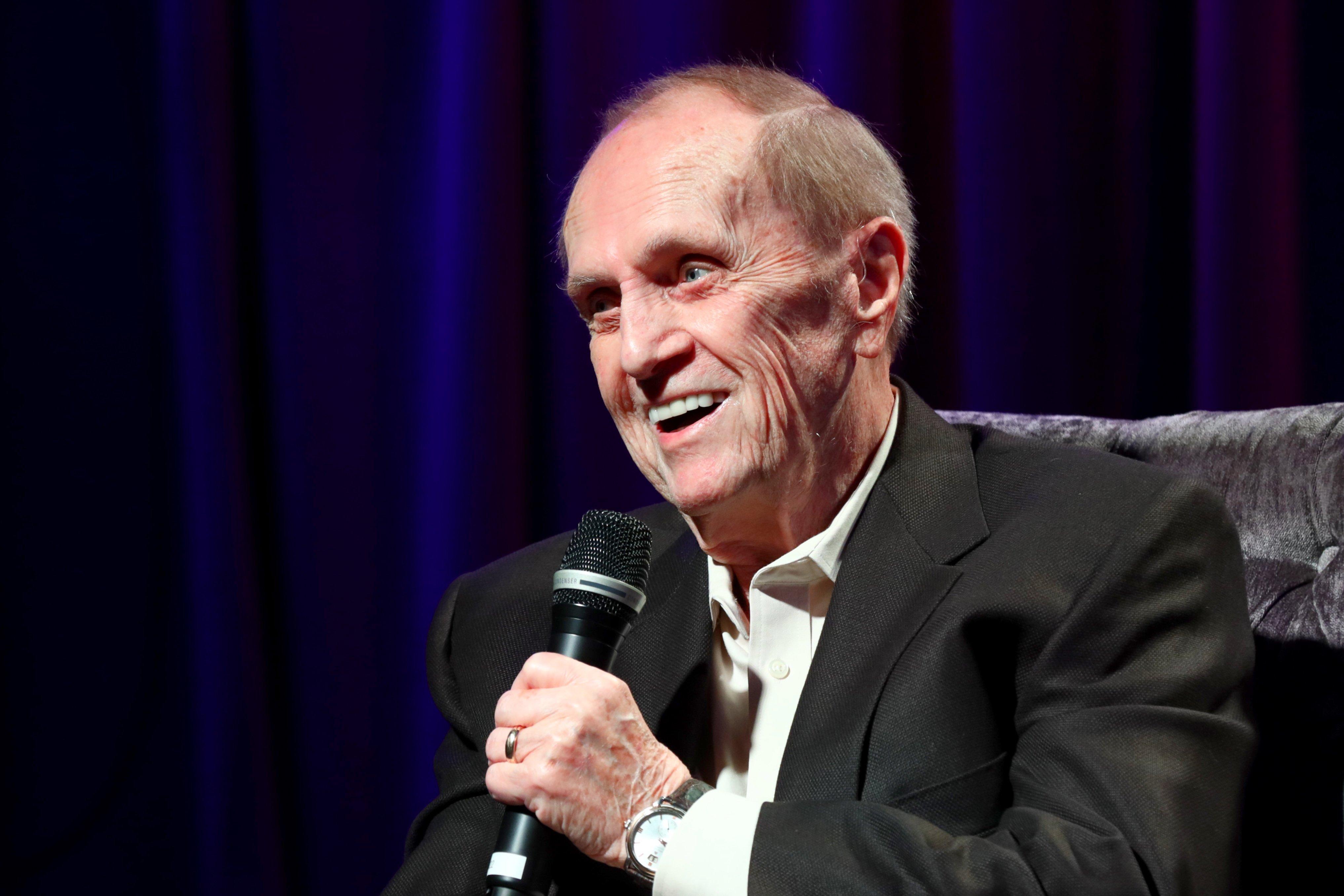
Photo: Rebecca Sapp/WireImage
news
Remembering Bob Newhart, The Comic Who Made GRAMMY History With His Debut Album
The legendary comic, whose work onstage and on screen spanned multiple generations, passed away at age 94 on July 18.
Bob Newhart, one of the most celebrated comedians of his generation and renowned for his deadpan delivery died at his home in Los Angeles on July 18. He was 94.
Awarded the John F. Kennedy Center for the Performing Arts’ Mark Twain Prize for American Humor in 2002, Newhart launched his career with a record-setting record. By the time he transitioned to television with two successful sitcoms, he had become a household name.
Newhart made his vinyl debut on April Fool’s Day in 1960, when Warner Brothers Records released his first comedy album, The Button-Down Mind of Bob Newhart. A year later, at the 3rd GRAMMY Awards, the former accountant-turned-comic took home three golden gramophones.
At the 1961 GRAMMYs, Newhart won Album Of The Year — beating out two classical albums as well as works by Nat King Cole, Frank Sinatra and Harry Belafonte. Newhart also won Best New Artist at that year's ceremony and, to this day, is the only comedian to win in both categories.
Recorded live on Feb. 10, 1960 at the Tidelands Motor Inn in Houston, Button Down Mind also became the first comedy audio album to reach No. 1 on the Billboard 200 chart. The album is widely considered to be one of the most consequential comedy albums of the 20th century and, fittingly, features the subtitle The Most Celebrated New Comedian Since Attila (the Hun).
The album was added to the Library of Congress’s National Recording Registry in 1960. That year, The New York Times noted that Newhart was “the first comedian in history to come to prominence through a recording.” In 2007, the Recording Academy inducted The Button-Down Mind of Bob Newhart into the GRAMMY Hall of Fame.
His second album, The Button-Down Mind Strikes Back!, similarly topped the Billboard charts and earned Newhart his third GRAMMY Award, this time for Best Comedy Performance — Spoken Word.
Newhart received two additional GRAMMY nods during this illustrious career: His Button Down Concert album was nominated for Best Spoken Comedy Album at the 40th GRAMMY Awards, and nine years later his I Shouldn't Even Be Doing This! was nominated for Best Spoken Word Album.a
The success of Button-Down Mind led to the launch of Newhart's long TV career. His NBC variety show, "The Bob Newhart Shot" only lasted one season, but earned an Emmy for Outstanding Comedy Series in 1962. Newhart found greater success through CBS, which broadcast a series of the same name. On the second "The Bob Newhart Show," which ran from 1972 to 1978, the comic actor played a psychologist,
Four years later, he followed up with another sitcom, "Newhart," which aired until 1990 and in which Newhart played a Vermont innkeeper.
Bob Newhart has continued to have a presence on the small screen. His recording debut has been referenced in a variety of contemporary period shows, including "Mad Men" and "The Marvelous Mrs. Maisel."
During his decades-long television career, Newhart received nine EMMY nominations, including as Outstanding Lead Actor in a Comedy Series over three consecutive years for "Newhart" and three for Outstanding Guest Actor in a Comedy Series for his appearances on CBS’ "The Big Bang Theory."
Born George Robert Newhart on Sept. 5, 1929, in Oak Park, Illinois, Newhart graduated from Loyola University of Chicago in 1952 with a degree in accounting. After serving in the Army during the Korean War, he returned to Loyola for law school, but dropped out and pursued office work.
Newhart worked as an accountant for United States Gypsum Corp., which manufactures construction materials, and later as a copywrighter for Fred Niles Films Company in Chicago. During that time, Newhart began recording "long, antic" phone calls with a friend as audition tapes for comedy jobs. They caught the attention of a Chicago disc jockey, who introduced Newhart to the head of talent at Warner Bros. Records and which led to a life-changing contract in 1959.
It was in the latter category that Newhart won his first and only Emmy in 2013, 20 years after the Academy of Television Arts and Sciences inducted him into its Hall of Fame.
Remembering Legends & History-Makers
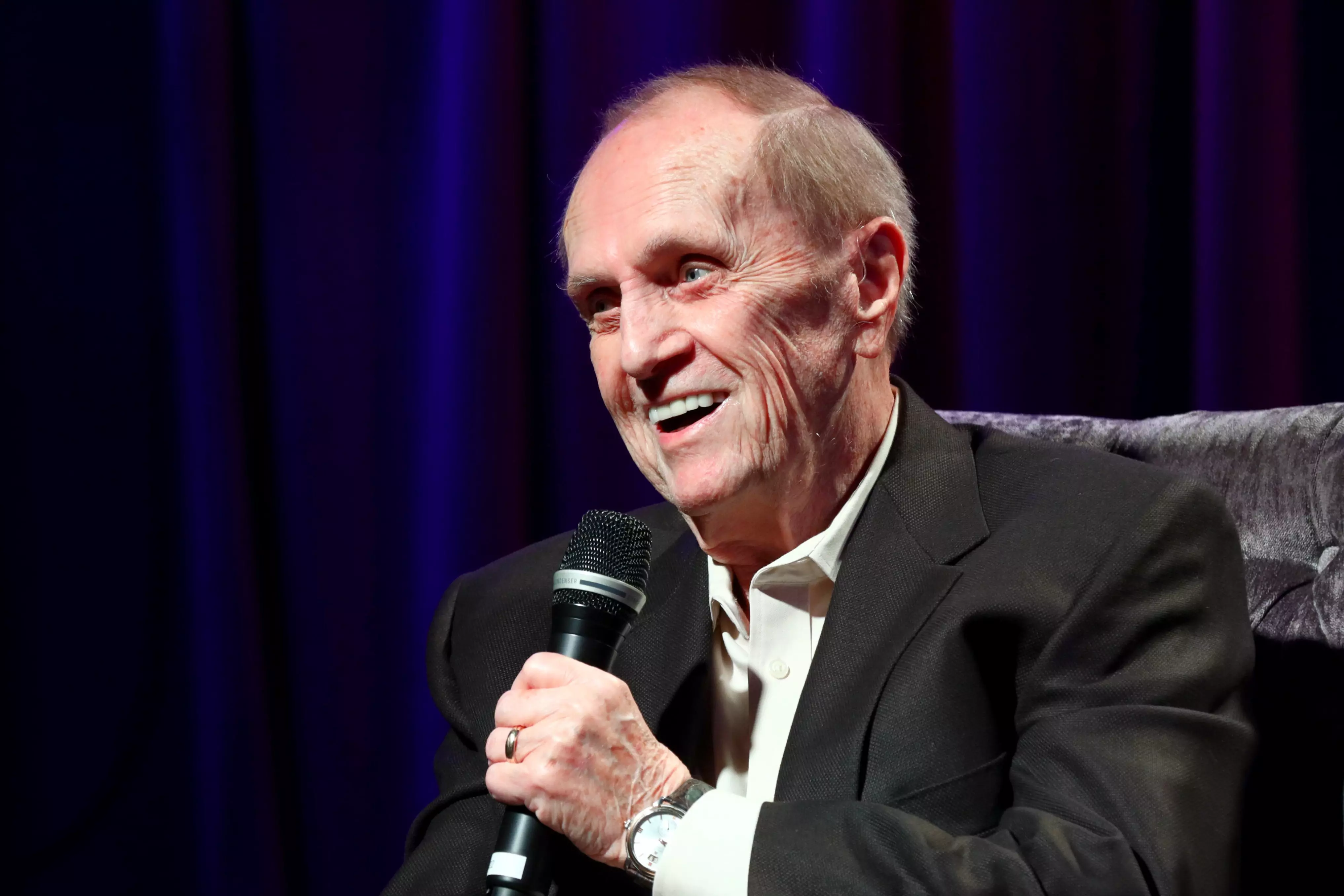
Remembering Bob Newhart, The Comic Who Made GRAMMY History With His Debut Album

2024 GRAMMYs In Memoriam: Stevie Wonder, Lenny Kravitz & More Pay Tribute To Late Icons
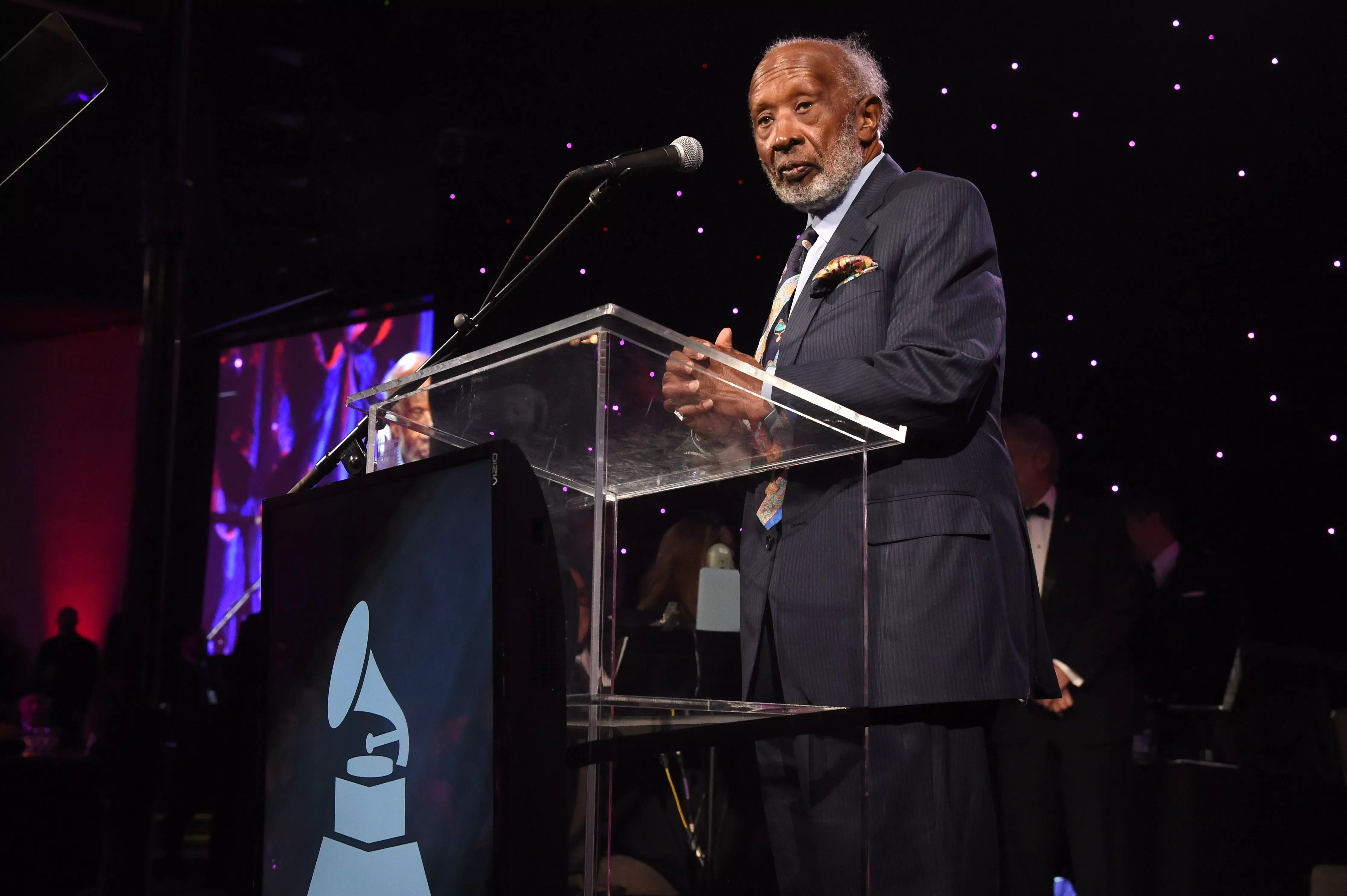
Remembering Clarence Avant: The Black Godfather, Renowned Entertainment Mentor & Recording Academy Honoree
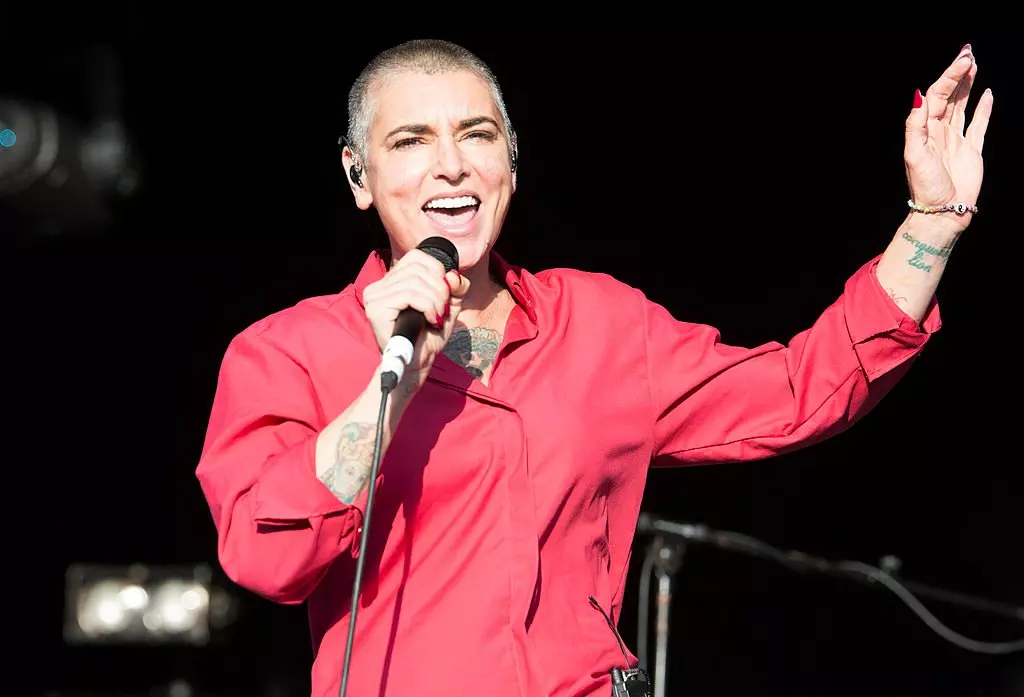
Remembering Sinéad O’Connor: 5 Essential Tracks By The Iconoclastic Singer/Songwriter
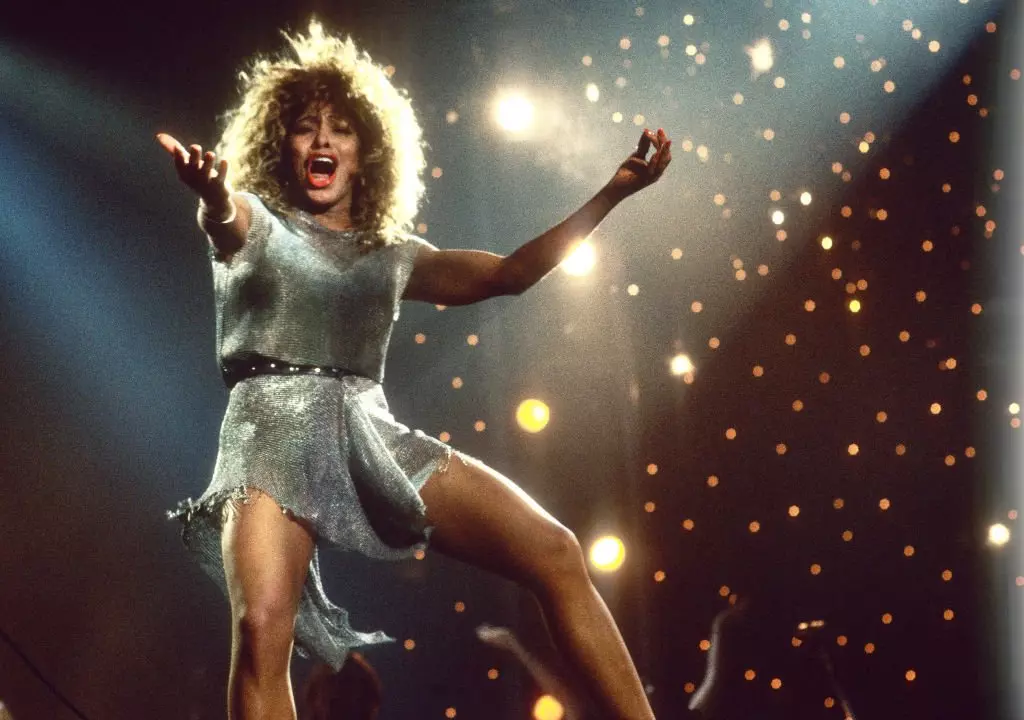
Remembering The Artistry Of Tina Turner, "The Epitome Of Power And Passion"
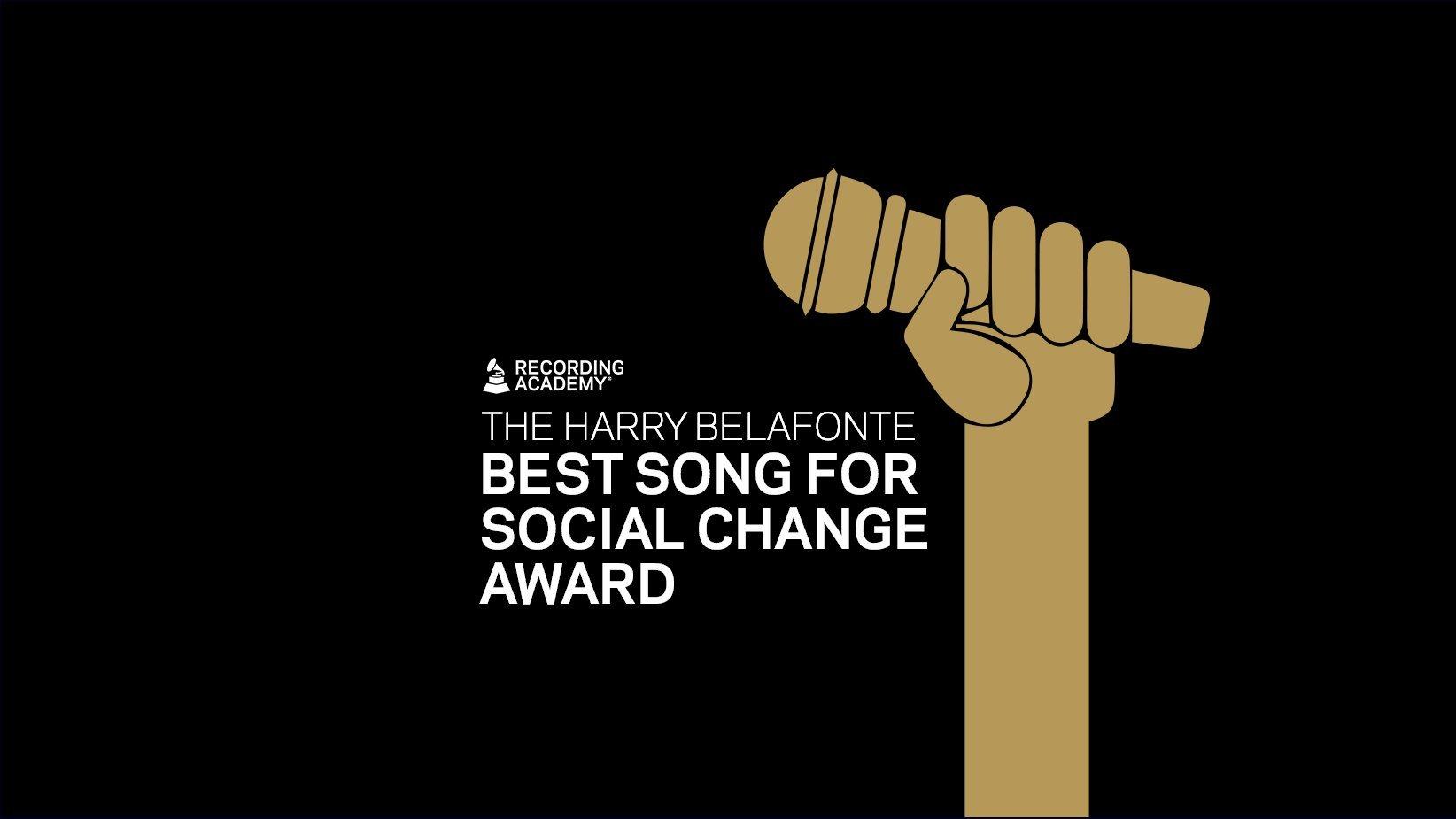
Graphic courtesy of the Recording Academy
news
Recording Academy Renames Best Song For Social Change Award In Honor Of Harry Belafonte
Submissions for the newly renamed Harry Belafonte Best Song For Social Change Award, which honors songwriters and message-driven music that address a timely social issue and promote peace-building, are open now through Friday, Aug. 30.
The Recording Academy has renamed and recategorized its annual Best Song For Social Change Special Merit Award to the Harry Belafonte Best Song For Social Change Award in honor of the late entertainment industry icon who was a powerful voice for social justice throughout his illustrious career. Originally established in 2022, the award will continue to honor songwriters of message-driven music that speaks to the social issues of our time and has demonstrated and inspired positive global impact.
Formerly a Special Merit Award, the Harry Belafonte Best Song For Social Change Award will now be categorized as a CEO's Merit Award; finalists and the recipients will be selected annually by a Committee composed of a community of peers dedicated to artistic expression, the craft of songwriting, and the power of songs to effect social change.
The submission period for the current cycle of the Harry Belafonte Best Song For Social Change Award is Wednesday, July 17 — Friday, Aug. 30. The inaugural Harry Belafonte Best Song For Social Change Award will be presented during the 2025 GRAMMY Awards season.
Read the Harry Belafonte Best Song For Social Change Award guidelines and make a submission here. Learn more about the award and see all of the past recipients.
Read More: Remembering Harry Belafonte’s Monumental Legacy: A Life In Music, A Passion For Activism
From his debut in the 1950s until his passing in 2023, Belafonte's artistic career progressed in parallel with his work as a trailblazing activist. An important friend of Rev. Dr. Martin Luther King Jr. and advisor, organizer and funder of the Civil Rights Movement, Belafonte helped organize the 1961 March on Washington for Jobs and Freedom and contributed to the 1961 Freedom Rides and the Mississippi Freedom Summer of 1964. Belafonte was outspoken throughout his career about American political elections; he performed at President John F. Kennedy's inaugural ball and was later named as a cultural advisor to the Peace Corps by Kennedy.
Creating the gold record standard in the music industry, Belafonte's 1956 RCA album CALYPSO made him the first artist in history to sell over 1 million albums. An advocate for global humanitarian causes including the Anti-Apartheid Movement and USA for Africa, Belafonte, in 1985, was the key organizer for the benefit single "We Are The World," which raised money for famine relief in Africa and ultimately won four GRAMMY Awards; it remains one of the best-selling physical singles of all time. As well, Belafonte became a UNICEF Goodwill Ambassador in 1987 and traveled internationally to raise awareness for the needs of children across sub-Saharan Africa.
A two-time GRAMMY winner and 11-time GRAMMY nominee, Belafonte received the Recording Academy's Lifetime Achievement Award in 2000. Three of Belafonte's recordings are inducted into the GRAMMY Hall of Fame: Belafonte At Carnegie Hall (inducted in 1999), "Banana Boat (Day-O)" (inducted in 2009), and Calypso (inducted in 2015).
Read More: Fight The Power: 11 Powerful Protest Songs Advocating For Racial Justice
"The greatness of Harry Belafonte's artistic legacy is matched by his profound impact of furthering social justice for all," Recording Academy CEO Harvey Mason jr. said in a statement. "We are honored to recognize his lasting influence with the Harry Belafonte Best Song for Social Change Award and to continue celebrating works that have inspired global communities towards social impact."
"The Belafonte estate is deeply honored and thrilled that the Recording Academy's Best Song For Social Change Award will now be named the Harry Belafonte Best Song For Social Change Award," Belafonte's living family members and Belafonte estate representatives Adrienne, Shari, Gina, and Pamela Belafonte said in a statement. "This recognition not only celebrates Harry Belafonte's enduring legacy in music and activism, but also inspires future generations to continue using their voices and art for justice and positive change."
The original Best Song For Social Change Special Merit Award debuted at the 2023 GRAMMYs. The inaugural award, presented by First Lady Jill Biden, went to "Baraye" by Iranian singer/songwriter Shervin Hajipour. At the 2024 GRAMMYs, the award went to "Refugee" by K'naan, Steve McEwan, and Gerald Eaton. "The words [K'naan] wrote for the song resonate with me like not many songs do," McEwan said about "Refugee" in an interview featured in the 2024 GRAMMYs program book.
Read More About Harry Belafonte
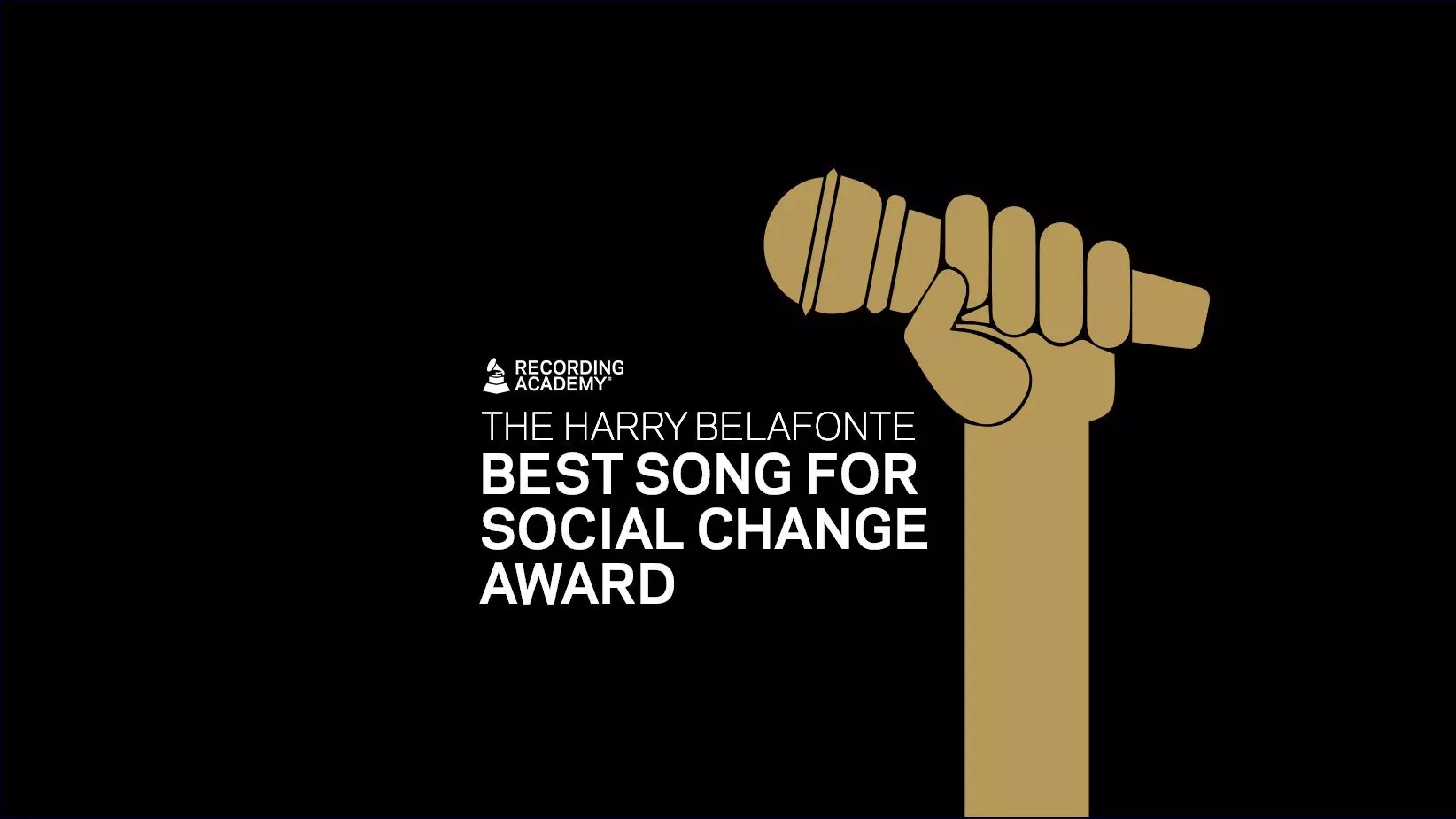
Recording Academy Renames Best Song For Social Change Award In Honor Of Harry Belafonte
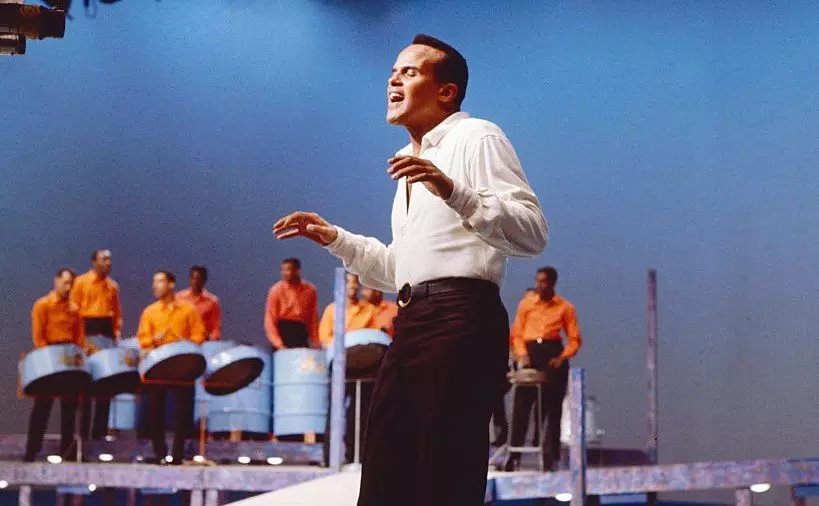
Remembering Harry Belafonte’s Monumental Legacy: A Life In Music, A Passion For Activism
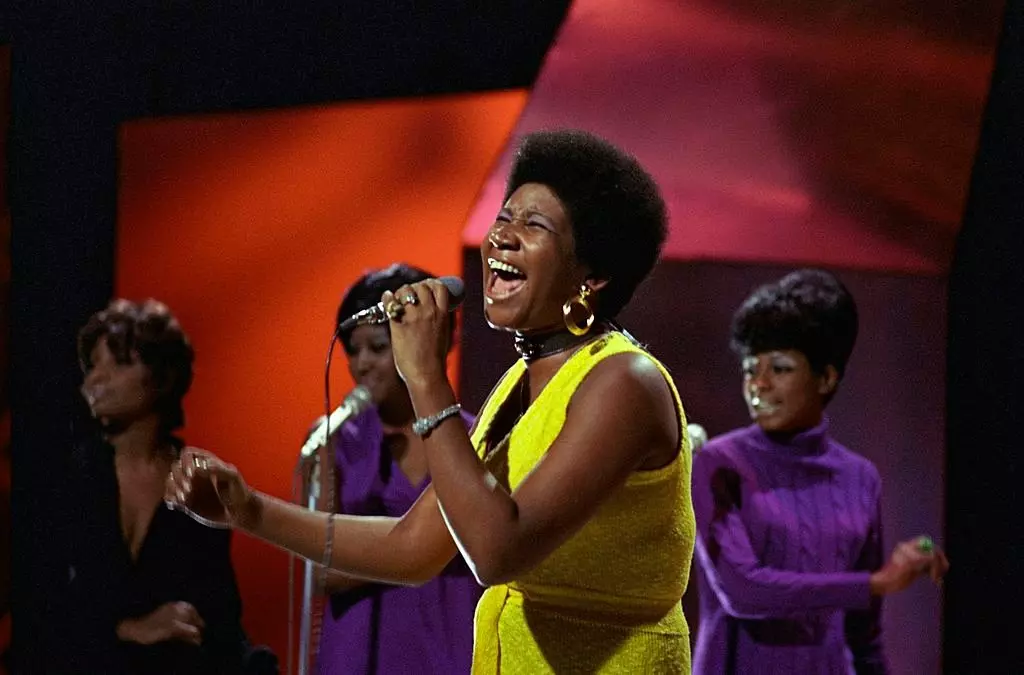
From Aretha Franklin To Public Enemy, Here's How Artists Have Amplified Social Justice Movements Through Music

Library Of Congress Adds Recordings By Chic, Tony Bennett, Fleetwood Mac
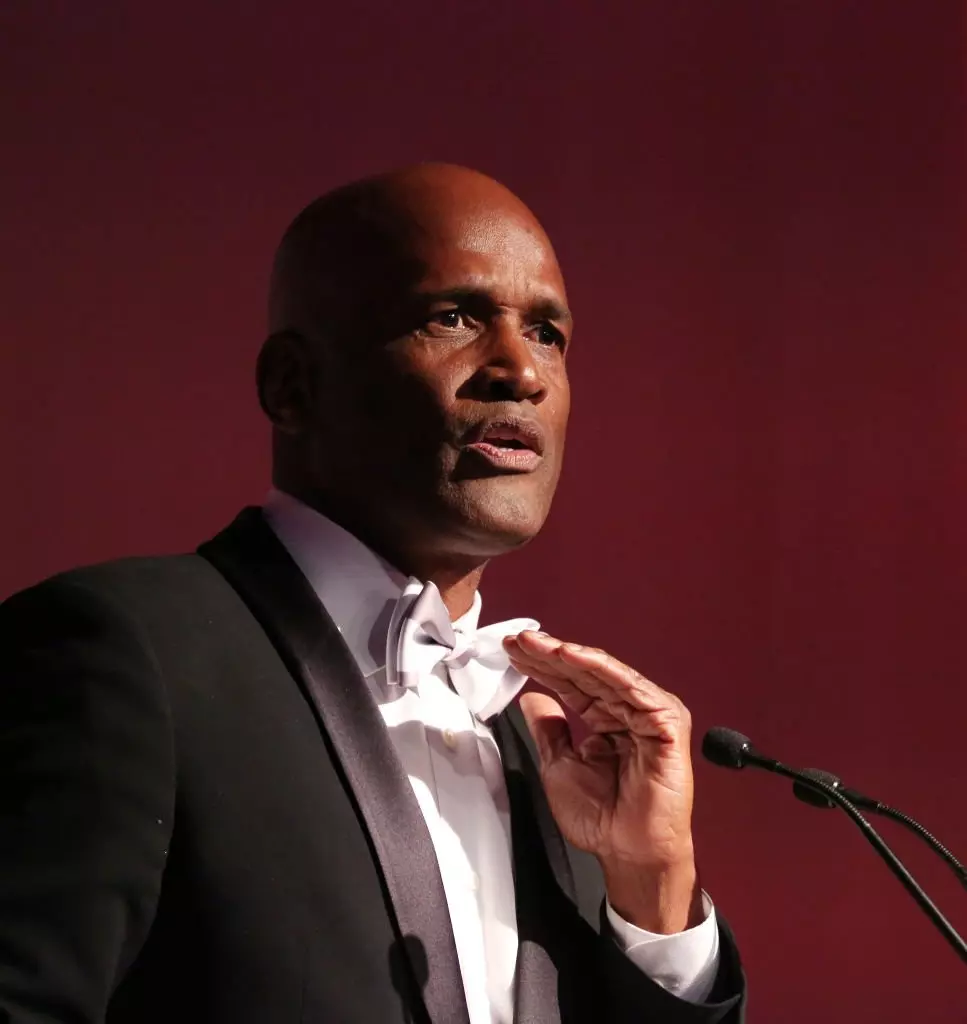
Kenny Leon Reprising Tupac Musical In Atlanta
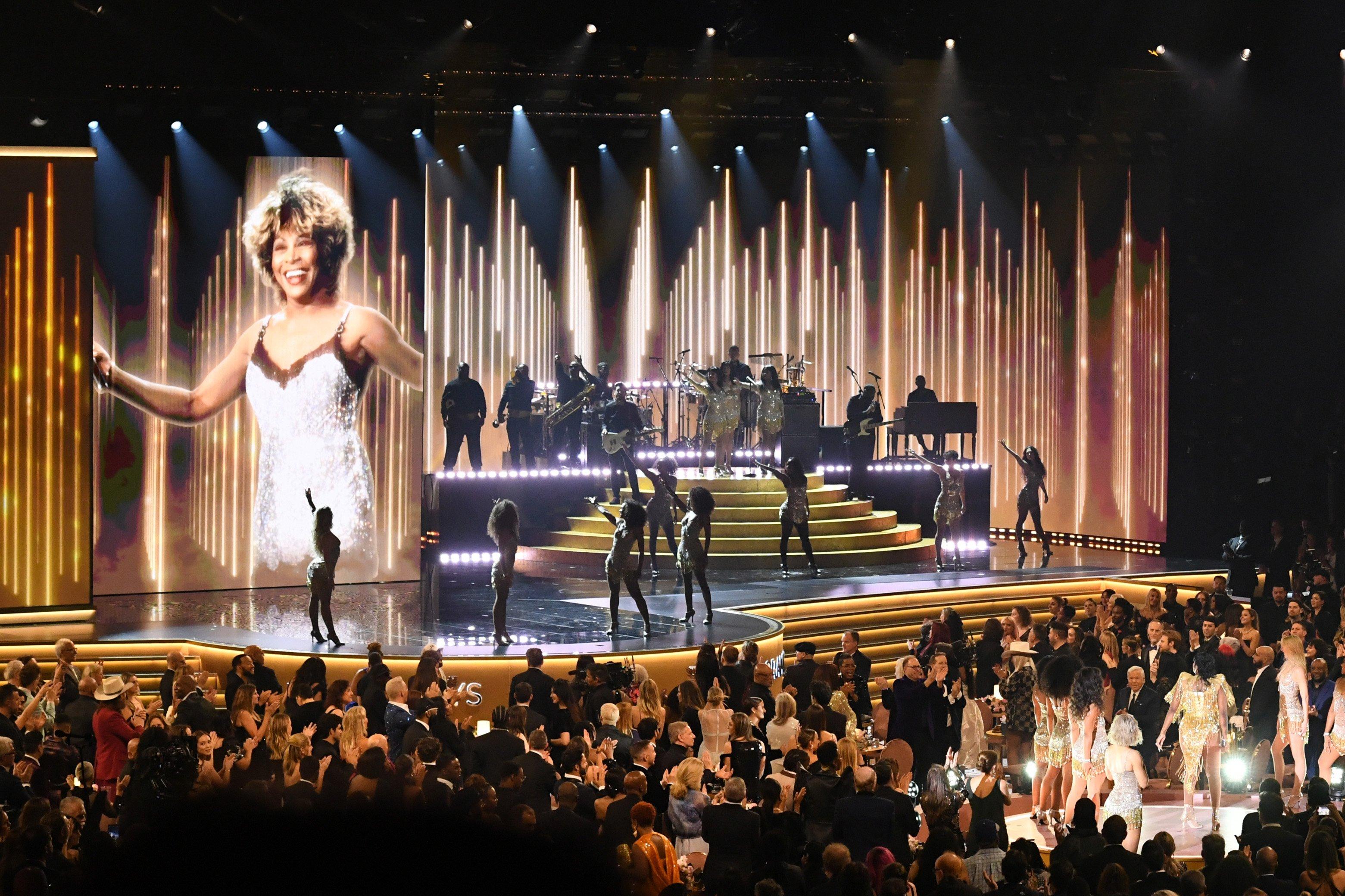
Photo: JC Olivera/WireImage
news
2024 GRAMMYs In Memoriam: Stevie Wonder, Lenny Kravitz & More Pay Tribute To Late Icons
A star-studded tribute honored the late leading lights of the music industry. In a heartfelt and exciting segment, Tina Turner was remembered with a spirited cover of "Proud Mary" and while Stevie Wonder did a tender posthumous duet with Tony Bennett.
Oprah Winfrey, Stevie Wonder and more graced the GRAMMYs stage for a star-studded tribute to Tina Turner, Tony Bennett and other stars we lost in 2023.
The In Memoriam segment of the 2024 GRAMMYs began with Wonder honoring the "I Left My Heart in San Francisco" crooner, who passed away in July after a long battle with Alzheimer's. With Wonder on piano and an ethereal, archival video of Bennett singing, the two created a tearjerker posthumous duet of "For Once in My Life" before transitioning into "The Best is Yet to Come."
Next, a video memorialized Jimmy Buffett before a visibly emotional Annie Lennox appeared on stage with Wendy and Lisa to remember Sinead O'Connor with a tender cover of the late Irish alt pioneer's classic single "Nothing Compares 2 U." "Artists for ceasefire! Peace in the world!" the Eurythmics icon shouted with raised fist at the end of her performance.
Elsewhere during the In Memoriam package, Burt Bacharach was celebrated for his unmistakable impact on popular music throughout the 20th century. Then, Lenny Kravitz paid respect to Clarence Avant as the "Godfather of Black Music" with a tribute that included a performance of "Ain't No Sunshine" and "Lean on Me" by Jon Batiste. Ann Nesby, Jimmy Jam, Terry Lewis and others joined later to perform "Optimistic."
Read more: Remembering The Artistry Of Tina Turner, "The Epitome Of Power And Passion"
Last but certainly not least, Oprah Winfrey ushered in a tribute to Turner, saying "Tina Turner was always a towering figure. She is our forever goddess of rock and roll who inspired millions, a moving symbol of grace and grit, soul and power…And as those big wheels of time keep on turnin’, Tina’s voice continues to speak to all of us."
Following her remarks lionizing the Queen of Rock 'n Roll and nine-time GRAMMY winner, Oprah ceded the stage to Fantasia Barrino for a transcendent, celebratory performance (with much dancing, as Turner would have wanted) of "Proud Mary" that went from the stage to the audience and back.
2024 GRAMMY Nominations: See The Full Winners & Nominees List
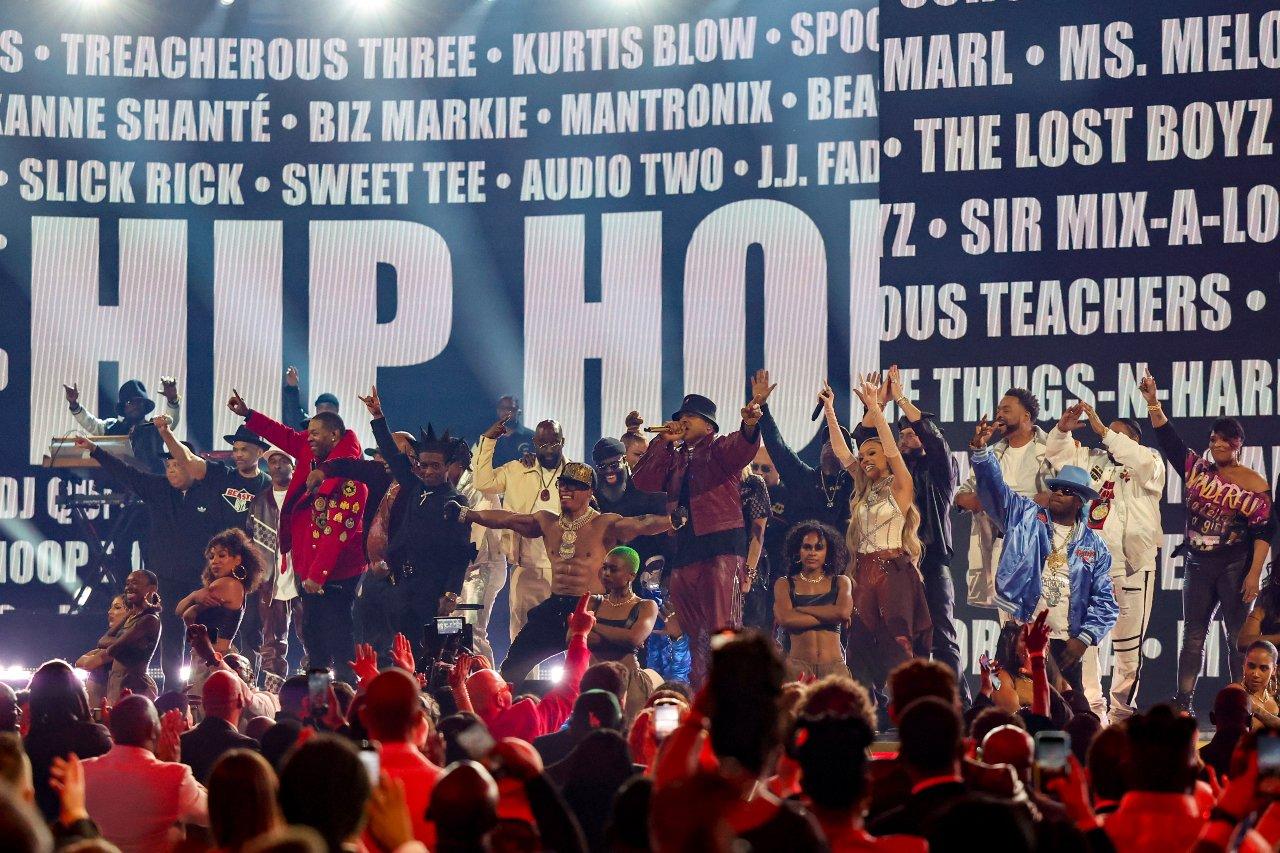
Photo: Robert Gauthier / Los Angeles Times via Getty Images
list
GRAMMY.com’s 50th Anniversary Of Hip-Hop Coverage: A Recap
The Recording Academy’s celebration of hip-hop’s 50th anniversary included televised events and captivating interviews. Check out the wide range of articles and features produced by GRAMMY.com commemorating this musical milestone.
When we look back at the Recording Academy’s 2023, the 50th anniversary of hip-hop will loom exceptionally large.
The ongoing celebration permeated every facet of the world’s leading society of music professionals this year, from the 65th Annual Awards Ceremony in February to the special airing of "A GRAMMY Salute To Hip-Hop" in December — a dense, thrillingly kaleidoscopic televised tribute to the breadth of this genre.
One major accompaniment to this was coverage of the genre’s legacy via GRAMMY.com, the editorial site run by the Recording Academy. If you haven’t been keeping up, we’ve got you covered. Here’s a highlight reel of the work GRAMMY.com published in honor of the 50th anniversary of hip-hop.
We Profiled Rising Stars
From Lola Brooke to Tkay Maidza, GRAMMY.com engaged in comprehensive in-depth interviews with artists who are at the forefront of shaping the future of hip-hop, and held a roundtable discussion about exactly what the next 50 years might look like.
We Published Conversations With Legends
DJ Kool Herc and Questlove, who have played unquestionable roles in hip-hop’s continuing evolution, spoke to GRAMMY.com about their profound and abiding connections to the idiom.
The Contributions Of Women Were Highlighted
Without the inspired vision of countless women, hip-hop would not be what it is today. The "Ladies First" segment, which kicked off "A GRAMMY Salute To Hip-Hop" featuring Queen Latifah, Monie Love, and MC Lyte, among other lady greats with Spinderella as DJ, was an ode to this.
In acknowledgment of female trailblazers in a world dominated by men, GRAMMY.com wrote about teen girl pioneers, women behind the scenes, a revealing Netflix doc, and women artists pushing the genre forward in 2023, from Ice Spice to Lil Simz.
We Revisted Hip-Hop’s Biggest Releases
From Enter The Wu-Tang (36 Chambers) to Jay-Z’s The Black Album to Cardi B’s Invasion of Privacy, GRAMMY.com dove deep into the core hip-hop canon. We also broke down the genre’s development decade by decade through the 70s, 80s, 90s, 00s, 10s, and 20s, with a focus on classic albums from each era.
We Criss-Crossed The Country
GRAMMY.com’s series of regional guides — from the Bay Area and SoCal, to Texas and the Dirty South, to D.C. and NYC — highlight hip-hop’s diversity of culture and sound.
We Went International
Although hip-hop is a quintessentially American phenomenon, its impact, appeal, and influence has spread worldwide. The international appetite for hip-hop was showcased in coverage of Latinx and Argentinian rappers to know, as well as five international hip-hop scenes to know: France, Nigeria, Brazil, South Africa, and England.
We Explored Hip-Hop’s Larger Impact
Hip-hop is more than a sound. It’s a culture that permeates almost every sector of life. Showcasing this effervescence, GRAMMY.com ran pieces about the evolution of hip-hop’s influence on educational curriculum worldwide, as well as its biggest fashion and style moments.
We Covered On Stage Celebrations
"A GRAMMY Salute To 50 Years Of Hip-Hop," the two-hour special that aired in December on CBS and is available on demand on Paramount+ represented a culmination of the Recording Academy’s 50th year anniversary celebration.
Revisit the 2023 GRAMMYs’ hip-hop revue, and check out a recap of "A GRAMMY Salute" with photos, a rundown of all the performers and songs and coverage of the Black Music Collective’s Recording Academy honors in February.
It Didn’t Stop There…
Notable coverage also included the evolution of the mixtape, 11 Hip-Hop Subgenres to Know and 10 Binge-worthy Hip-Hop Podcasts, as well as a breakdown of Jay-Z’s Songbook and Snoop Dogg’s discography.
For everything GRAMMY.com and all things hip-hop — including our rap-focused run in the GRAMMY Rewind series — visit here.
